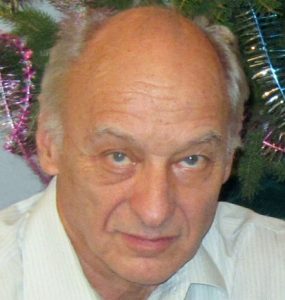István Rényi
He worked at the Measurement and Computing Research Institute (MSZKI) of the Central Physical Research Institute (KFKI) of the Hungarian Academy of Sciences until 1998 in various research and development positions as a scientific associate, then as a senior scientific associate, and performed departmental tasks. He designed punched tape peripheral interface units for the TPA-1001 minicomputer, and then participated in the design of the TPA computer. From 1972 to 1974, he worked as a visiting scientific associate at McMaster University in Canada, where he created a Walsh-Fourier spectrum converter using the then emerging microprocessor.
From the second half of the 1970s, his interest turned towards computer image processing. He obtained his PhD in 1982 on the topic of multi-microprocessor image processing. In the VEGA space program launched for the research of Halley's Comet (1980-86), he led the development of the digital units and ground control system of the on-board image recording and tracking camera designed to observe the comet nucleus. Under his professional guidance, a multispectral image processing software suitable for satellite ground resource research, a bit-slice microprocessor-based image processor, was completed. He created a microprogrammed image storage subsystem for the above image processing system.
From 1990, he worked as a visiting researcher at the National Institutes of Health in the United States for five years; he participated in the automation of cell biology experiments. He developed procedures and created programs for the automatic evaluation of large numbers of cell images obtained by quantitative fluorescence microscopy.
From 1999, he headed the IT Regulation Department of the Hungarian Communications Regulatory Authority (HIF). He participated in the work of the working committee that developed the European electronic signature directive and the electronic signature standard system and in the preparation of the Hungarian electronic signature law. Under his leadership, the requirements system that forms the basis for the inspection of qualified authentication service providers was completed and regular official inspections of service providers were introduced. He established and operated the Public Administration Root Authentication Service (Root CA), which is at the top of the electronic signature trust hierarchy.
Awards: Institute Award, 2nd degree (KFKI, 1974); Jánossy Award (KFKI, 1978); Gold Award for Outstanding Inventor (MTA, 1982); Gold Award for Labor Merit (Council of Ministers, 1986); Honorary Title for the Regulation of Information Communications (HIF, 2000).
Created: 2019.12.12. 10:14
Last modified: 2024.04.18. 12:24

